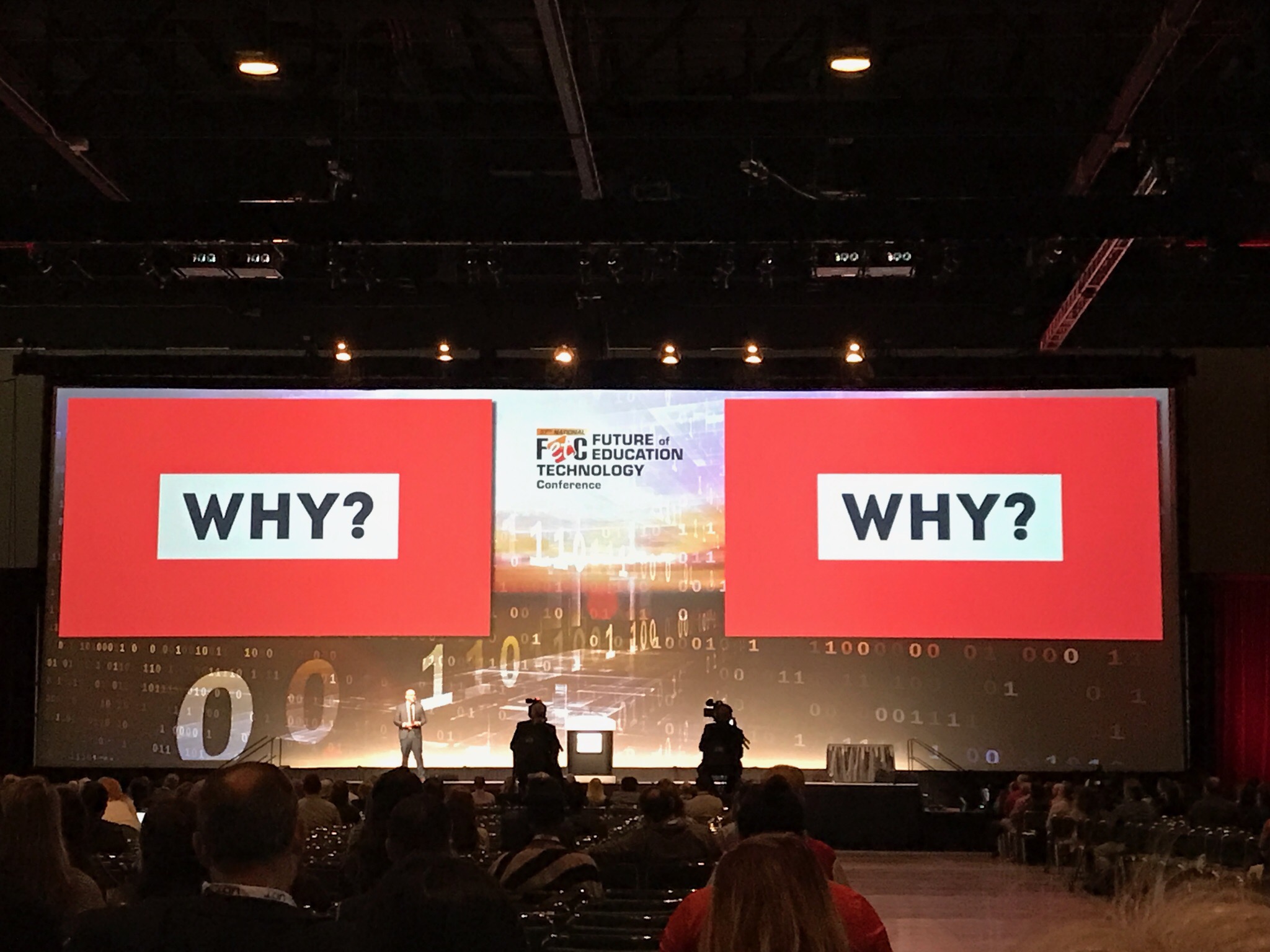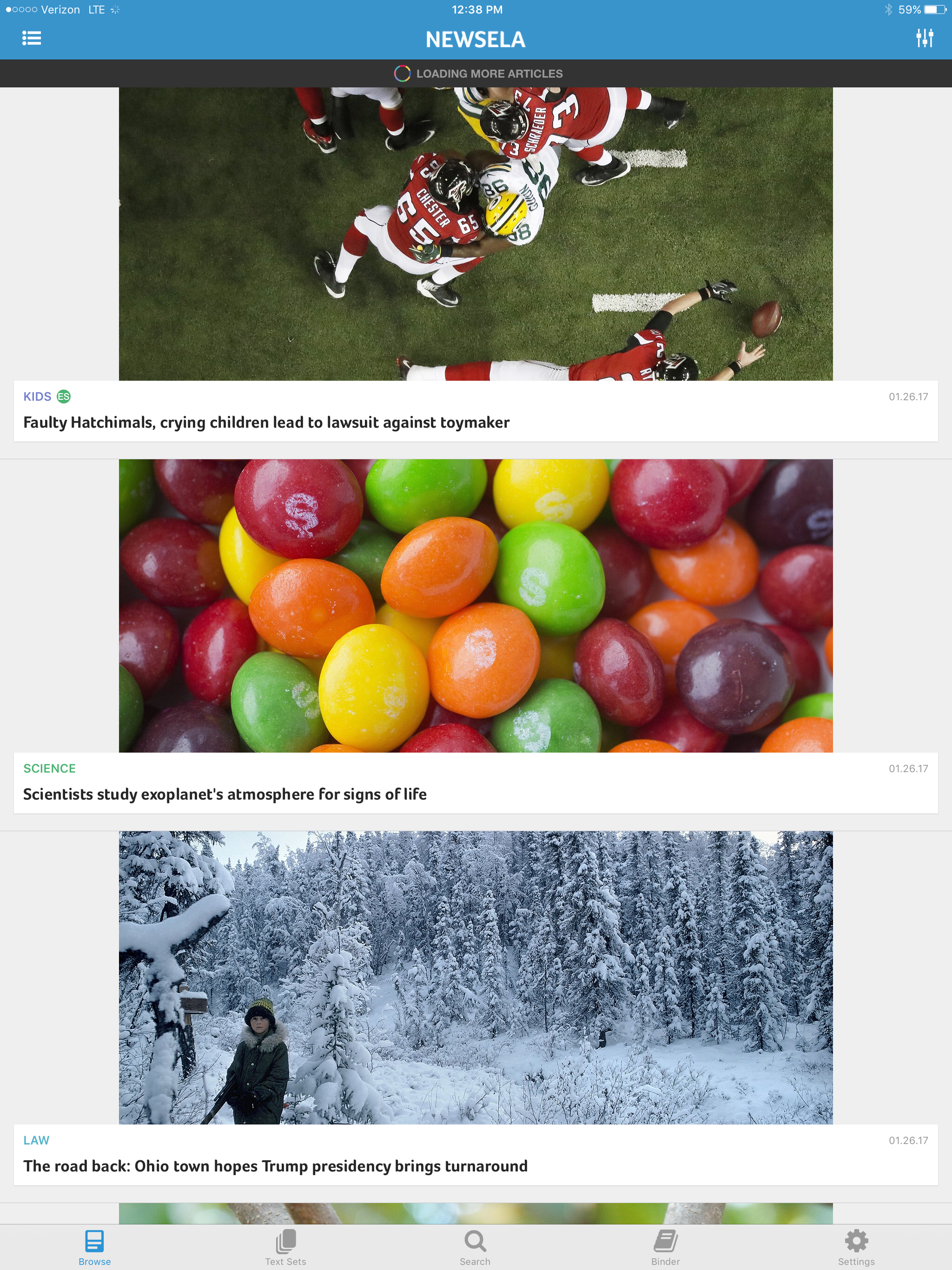#ISTE17 Captured.
So I decided to use Book Creator to "capture" the ISTE experience. After this brief introduction, you will find visual images with text that more closely capture the immensity of time spent in San Antonio. I am so grateful to have had the opportunity to attend such a conference. I don't think I'd ever seen so many educators in one place at the same time. It was noted by ISTE leaders that about 21,000 people were in attendance (including vendors) representing every state in the US and over 80 countries around the world. That's amazing right! I attended several sessions, those that were part of the #ISTE17 schedule and those that were not. Many learning events happened outside of the four walls of a room or session, yet that pushed me, motivated me, inspired me and changed me for the better. I learned a lot from sessions including: the @Newsela Certification Workshop (Sunday - starting things off), Getting Started with Swift Playgrounds (coding), Google Drawing - Going beyond the Drawing, Developing Natural Curiosity through PBL, The Power of Music for Learning: Garageband, Closely Reading with Thinglink, Real World Coding: Apple App Development, Digital Formative Assessment, and Virtual Poetry Slams. These of course were aside from the awesome keynotes delivered by Jad Abumrad & Jennie Mageira. I was not able to make the last one since I had to prepare to leave. Jennie Mageira was a POWERFUL keynote speaker who literally told stories that took you through a few emotions. Her delivery was quite impactful.
It was indeed an honor to meet many that I'd interacted with to some degree via social media, whether on Twitter, Voxer or other means. You have conversations and then you see that they are real! How amazing is that! Here it goes!

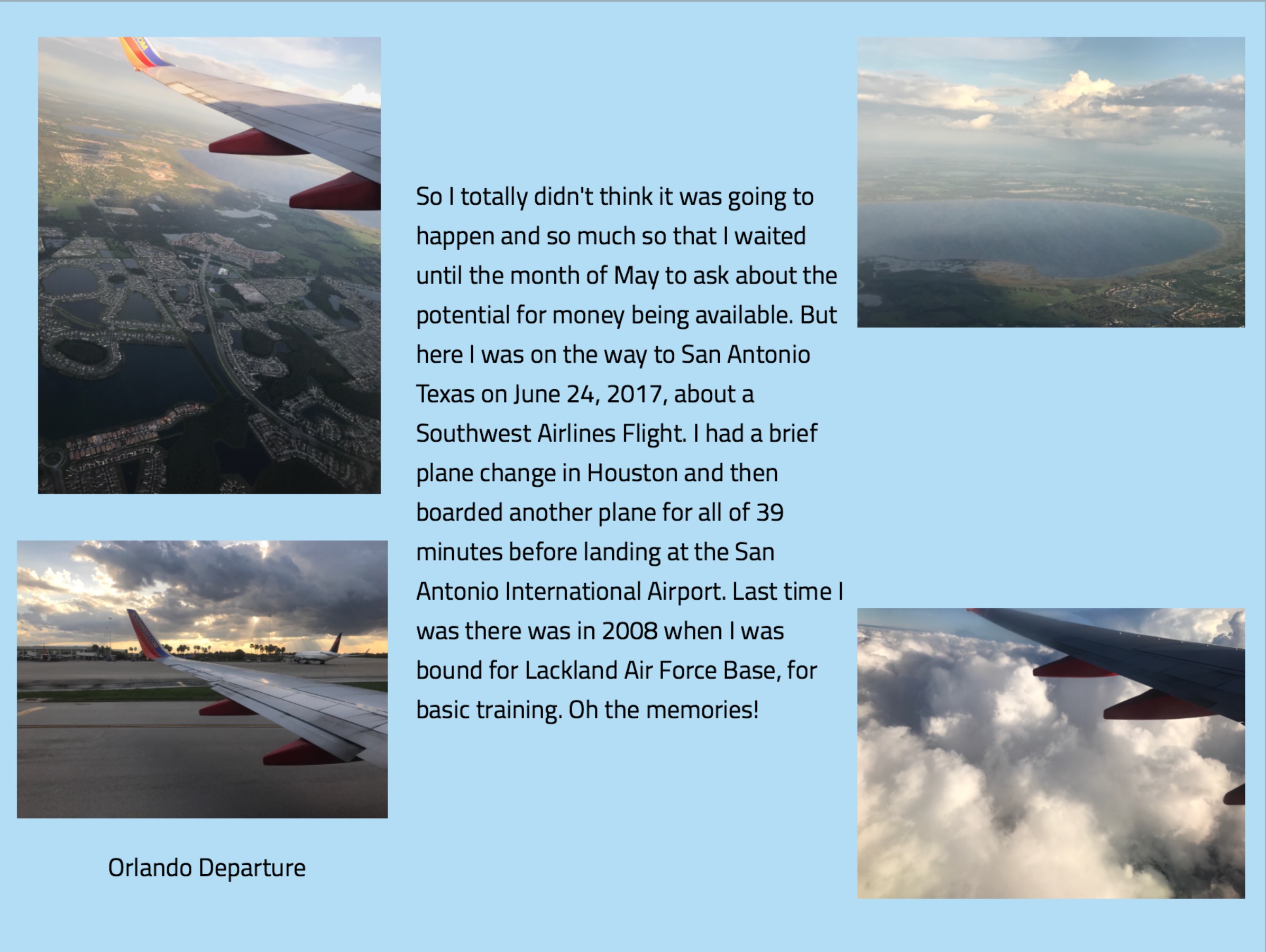
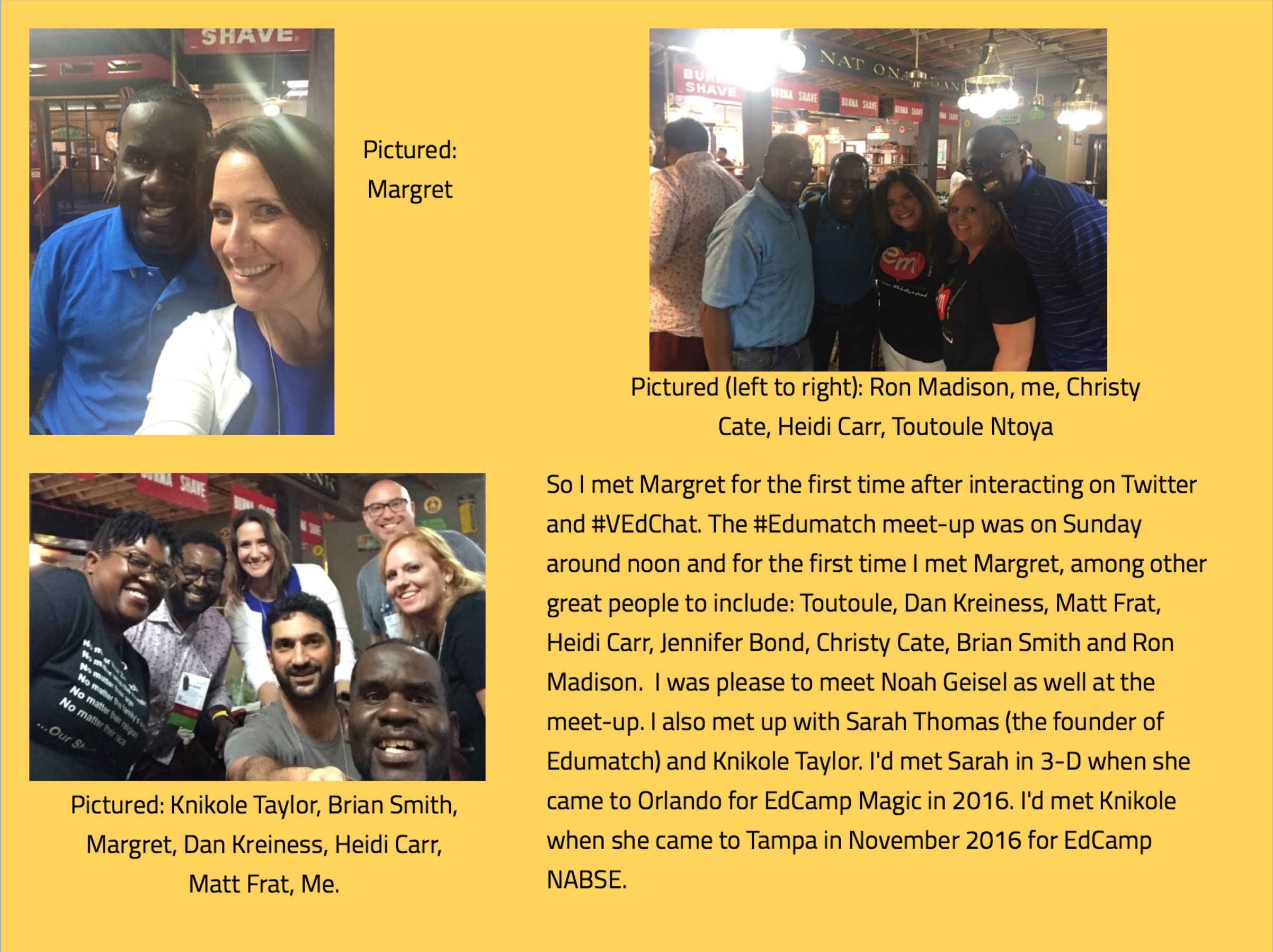
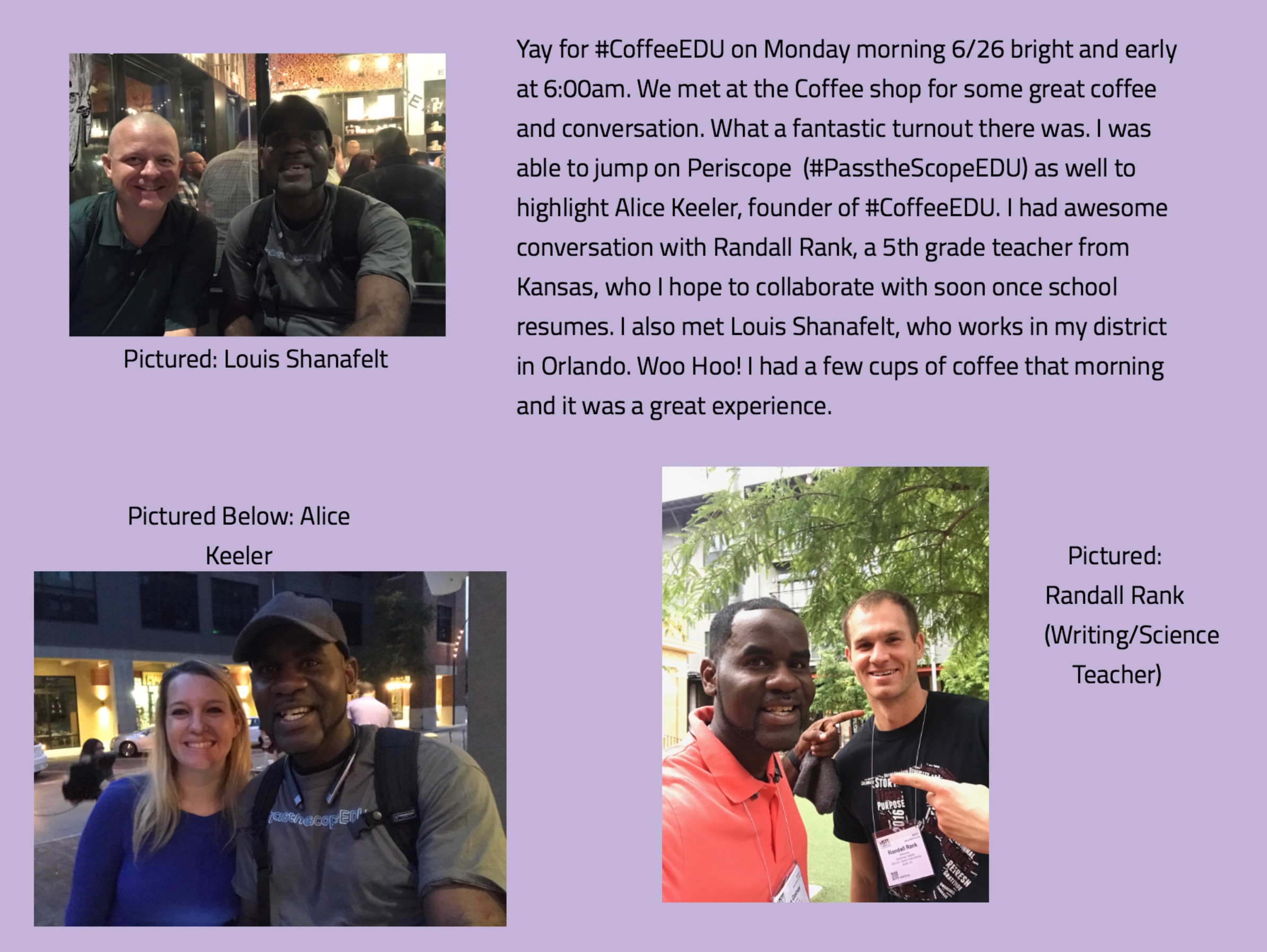

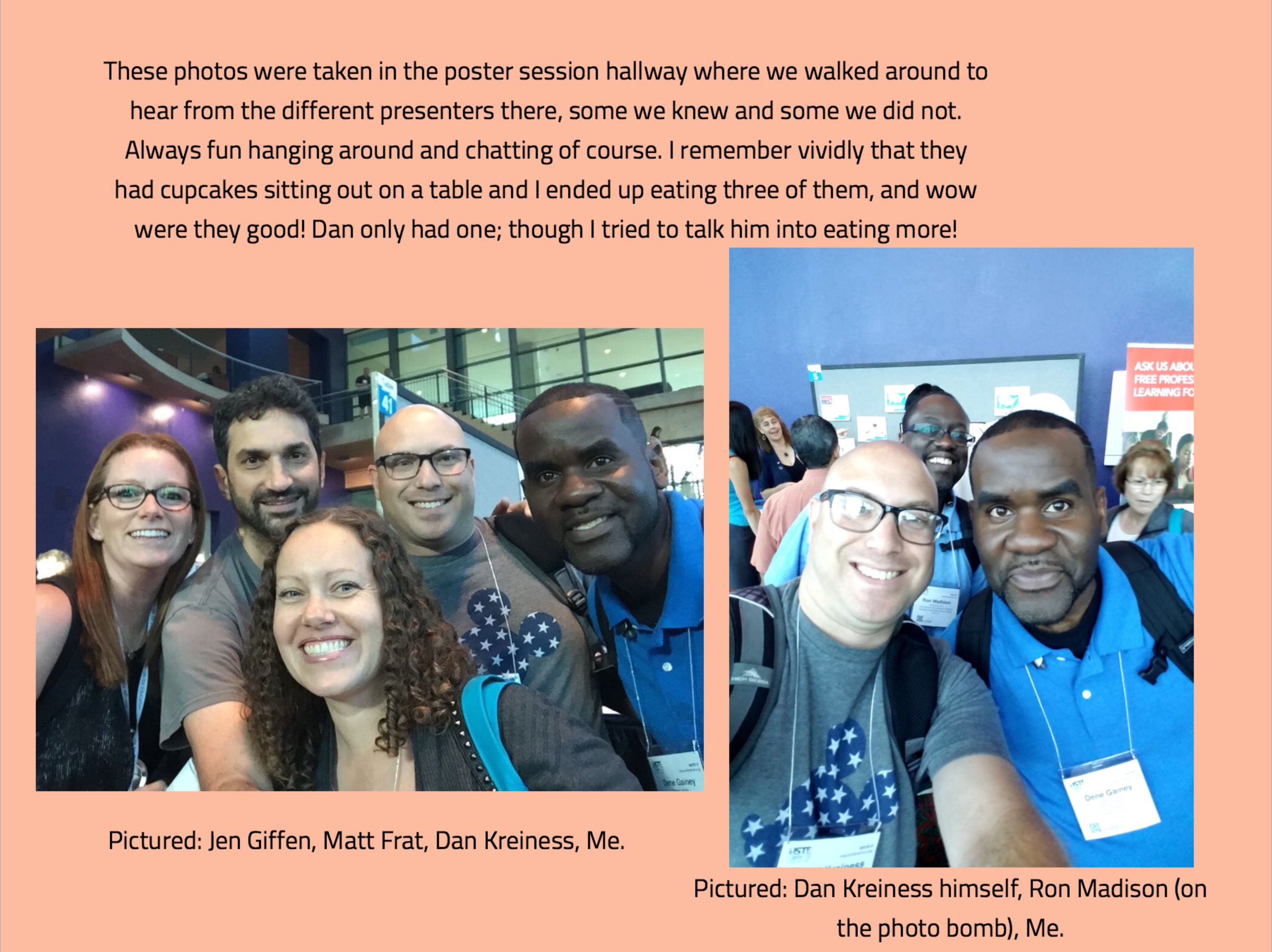

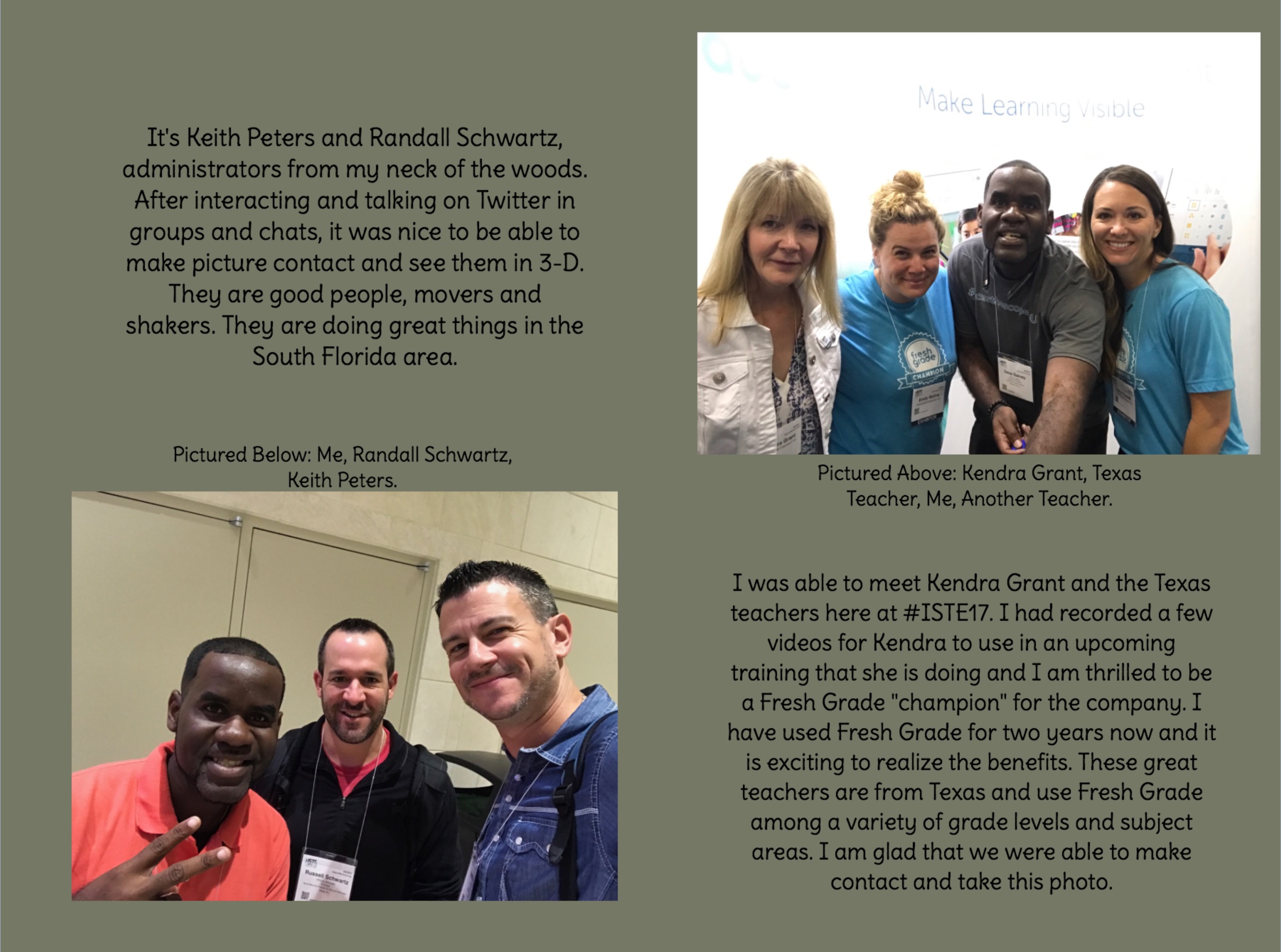
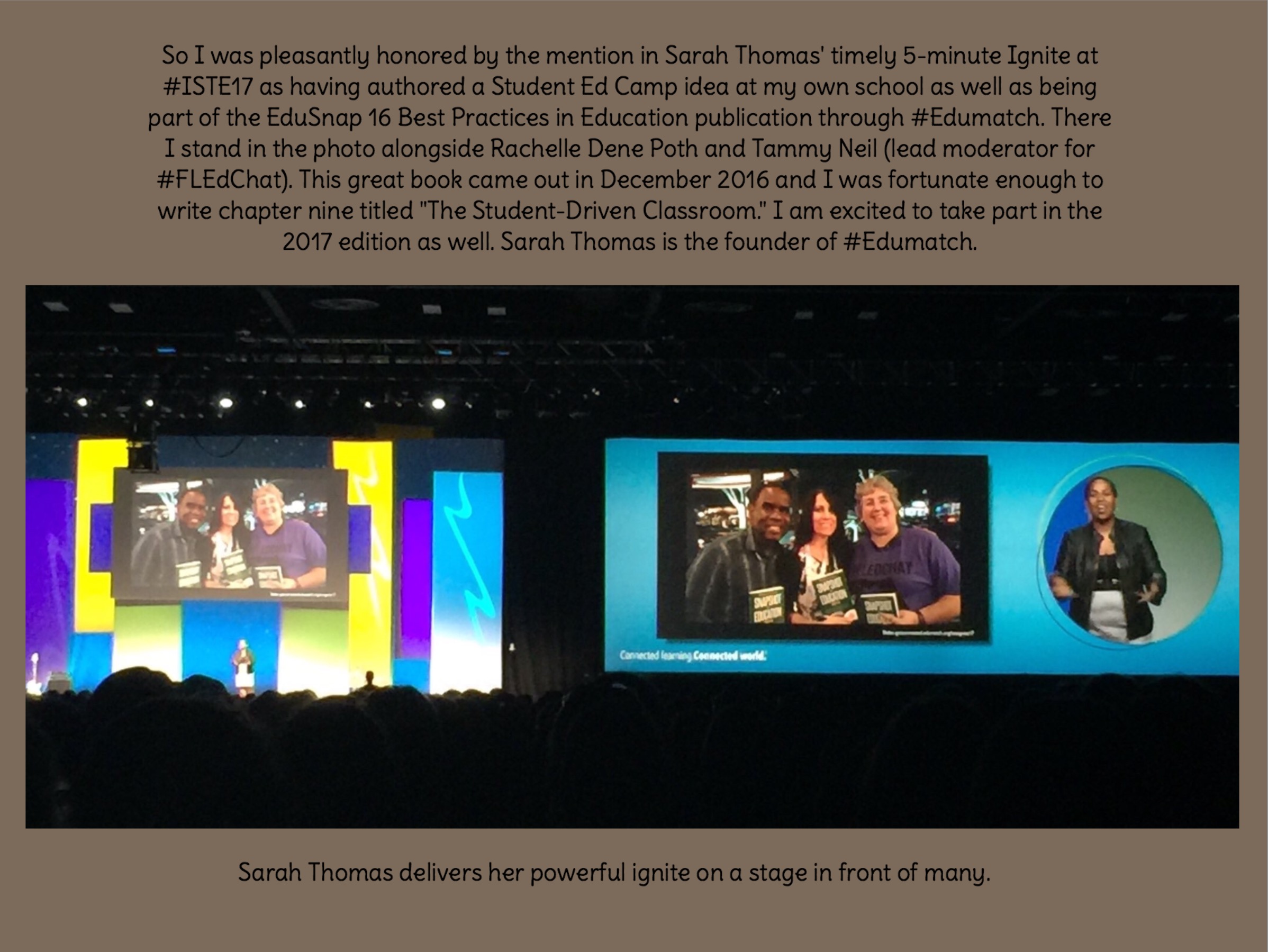
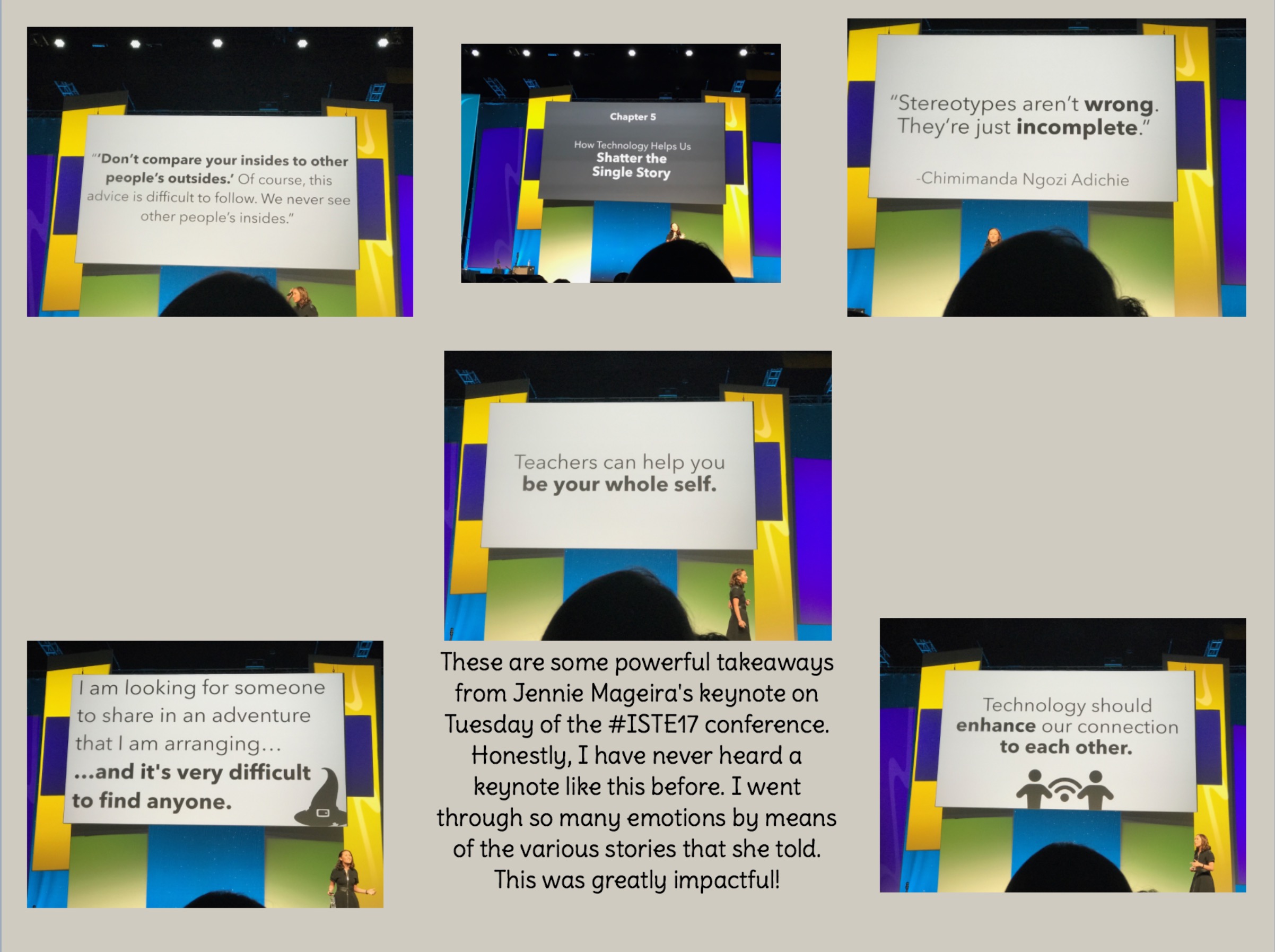
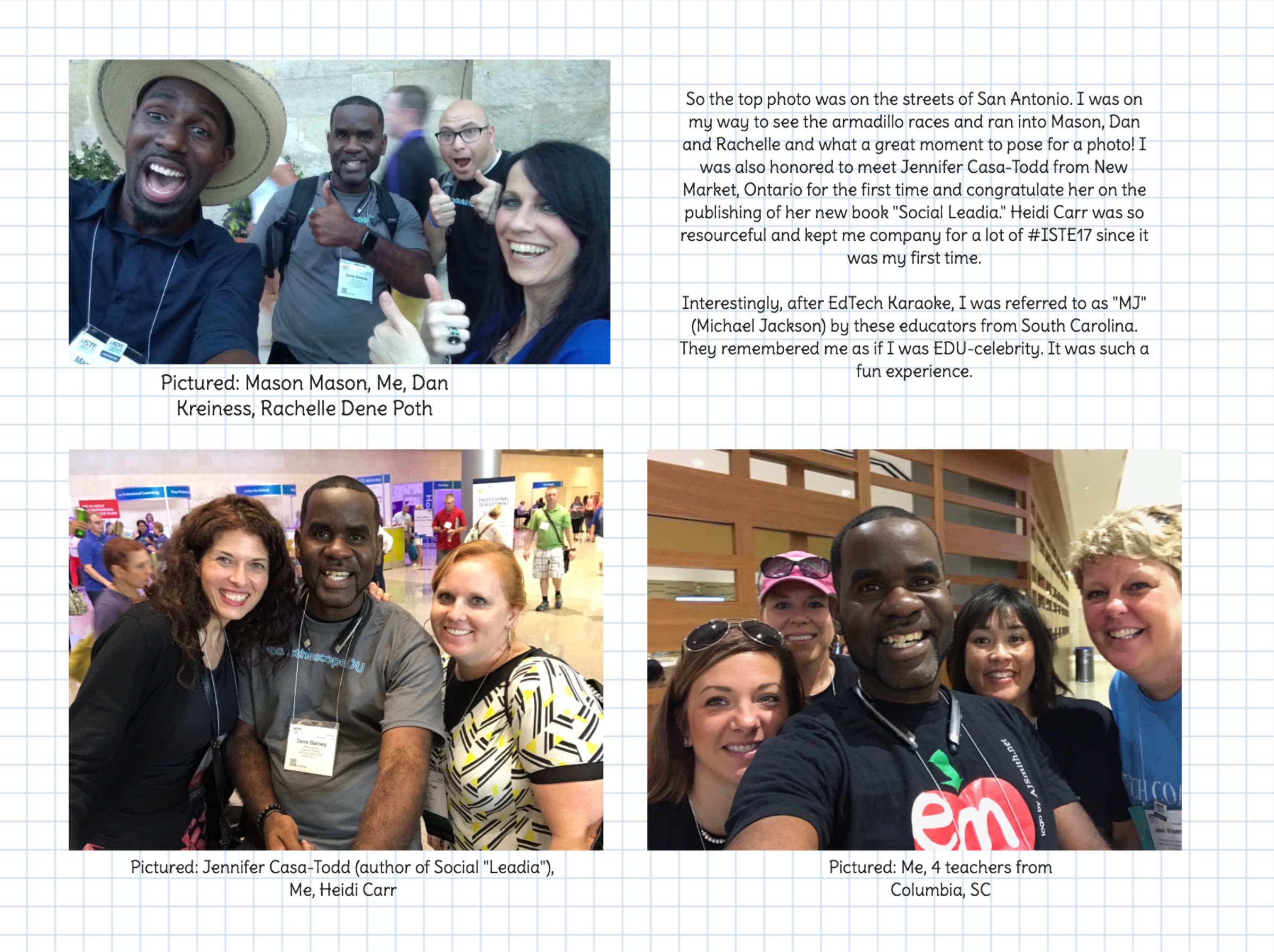
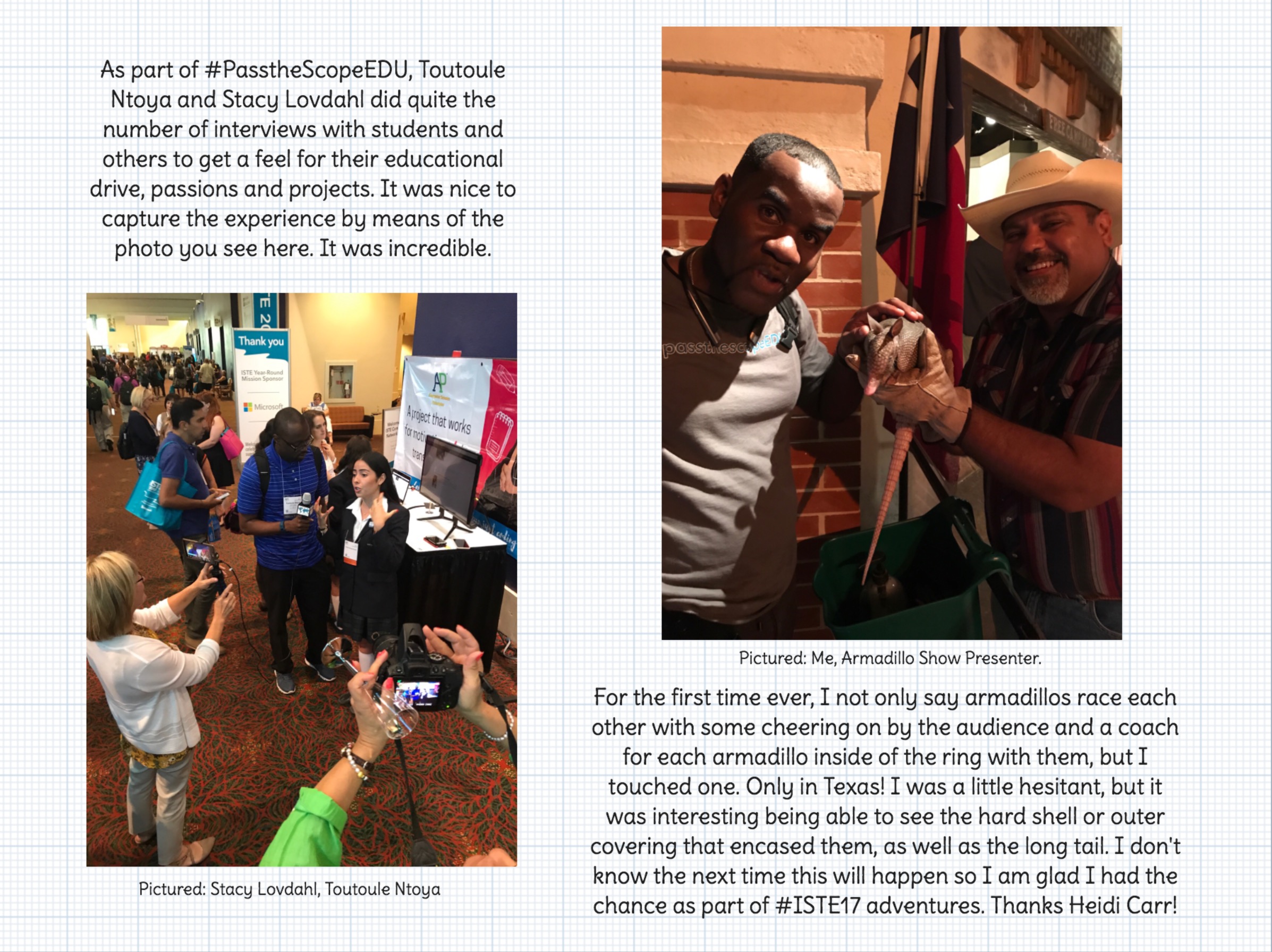

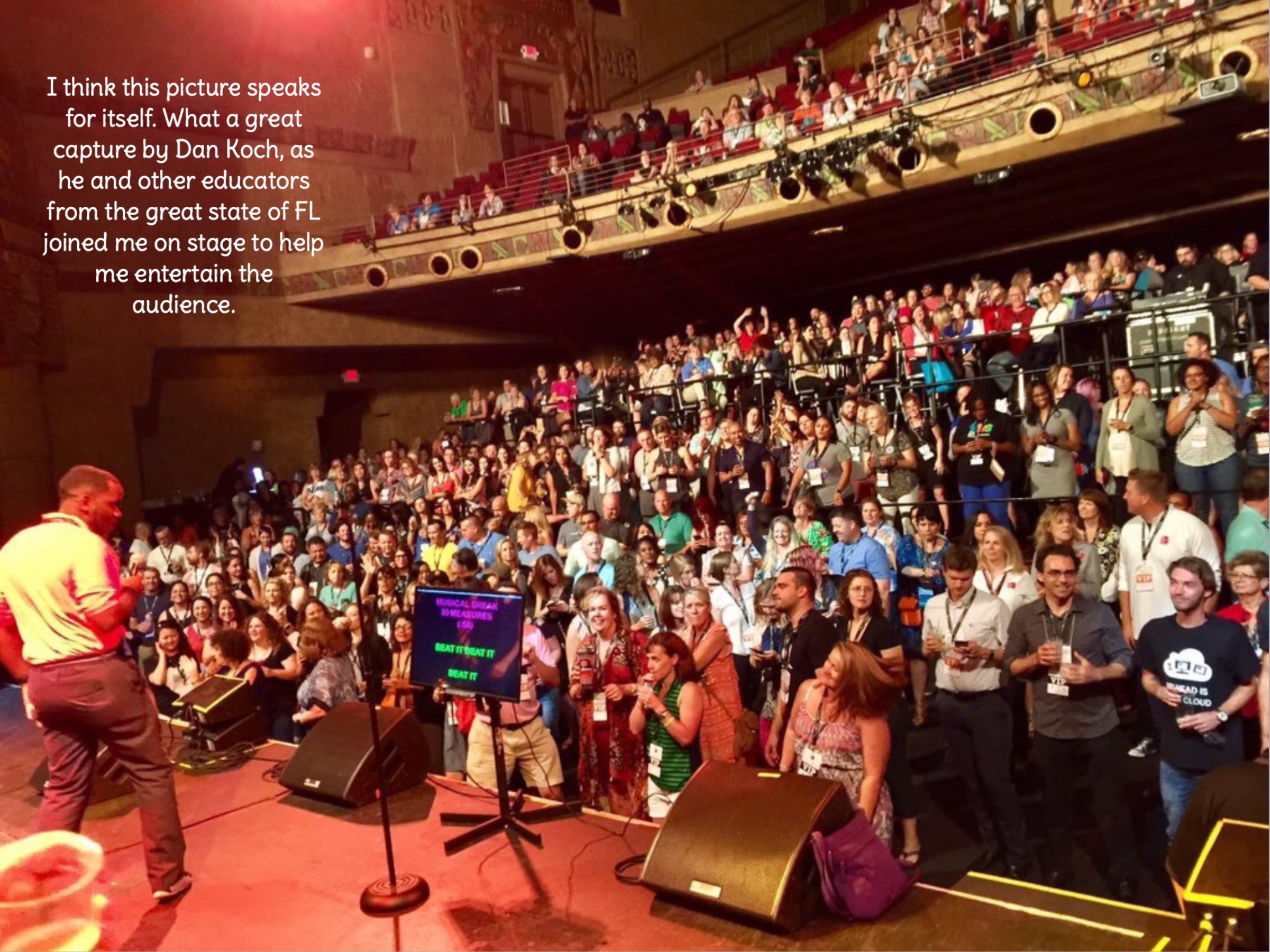


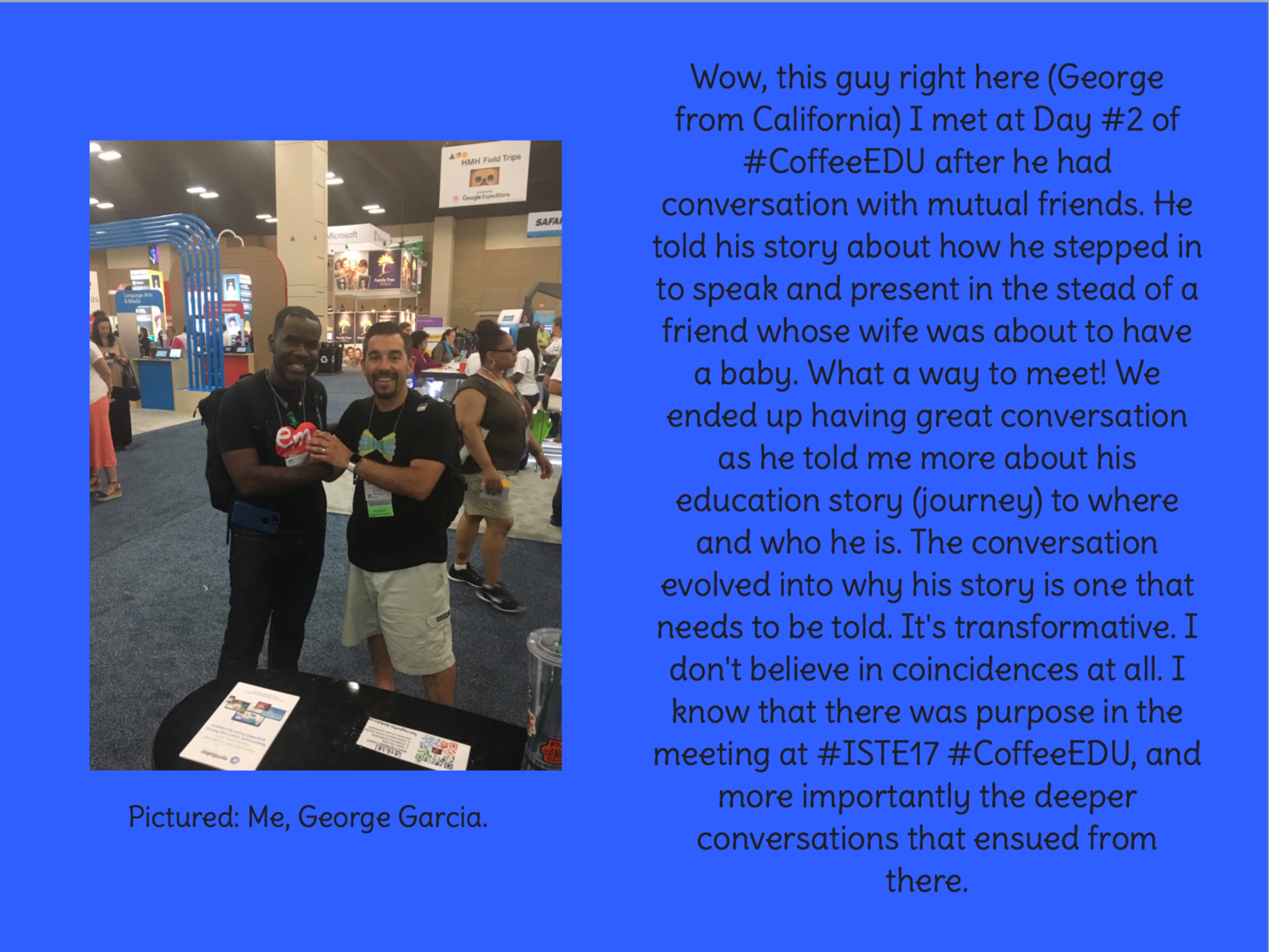

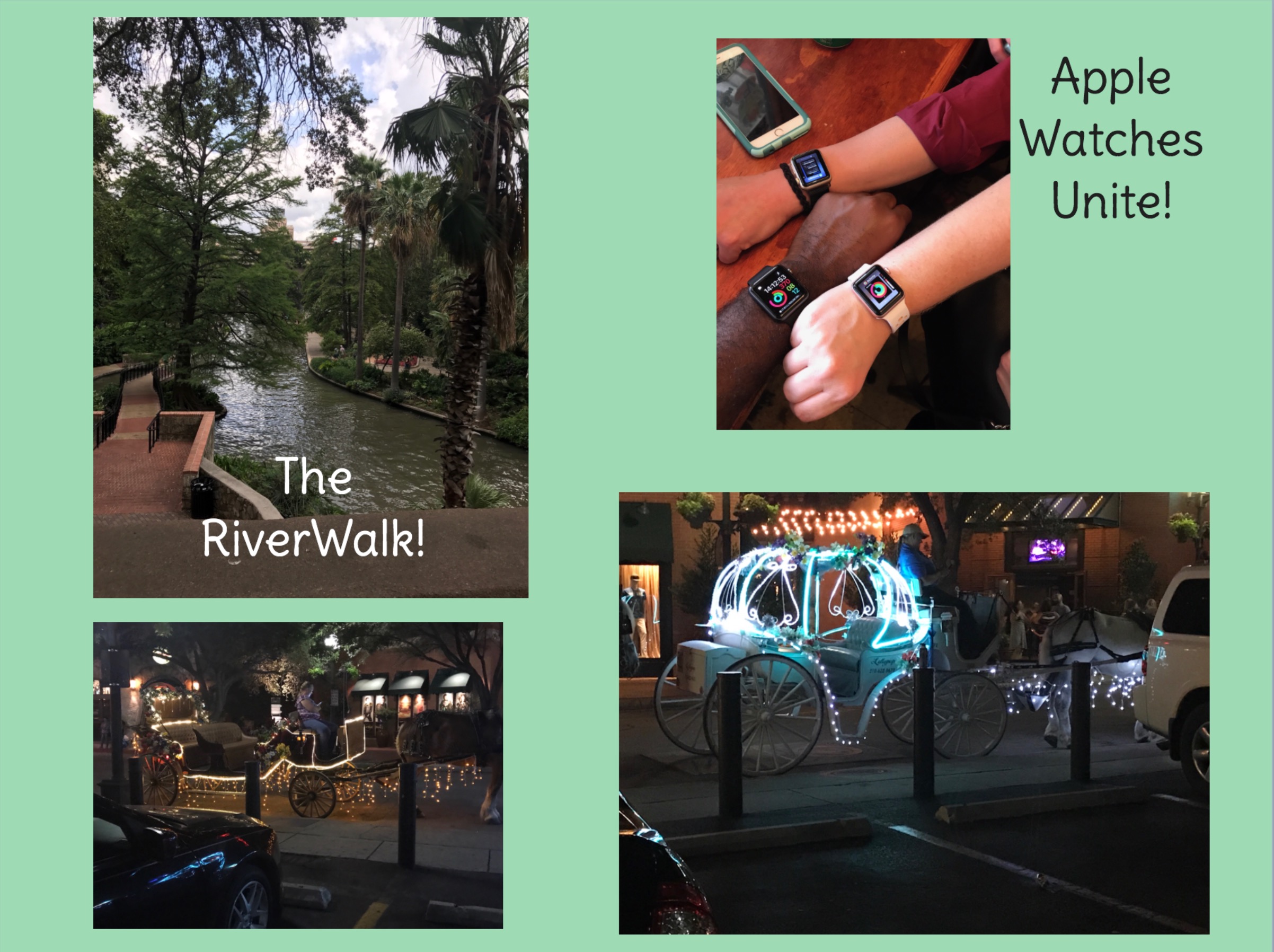
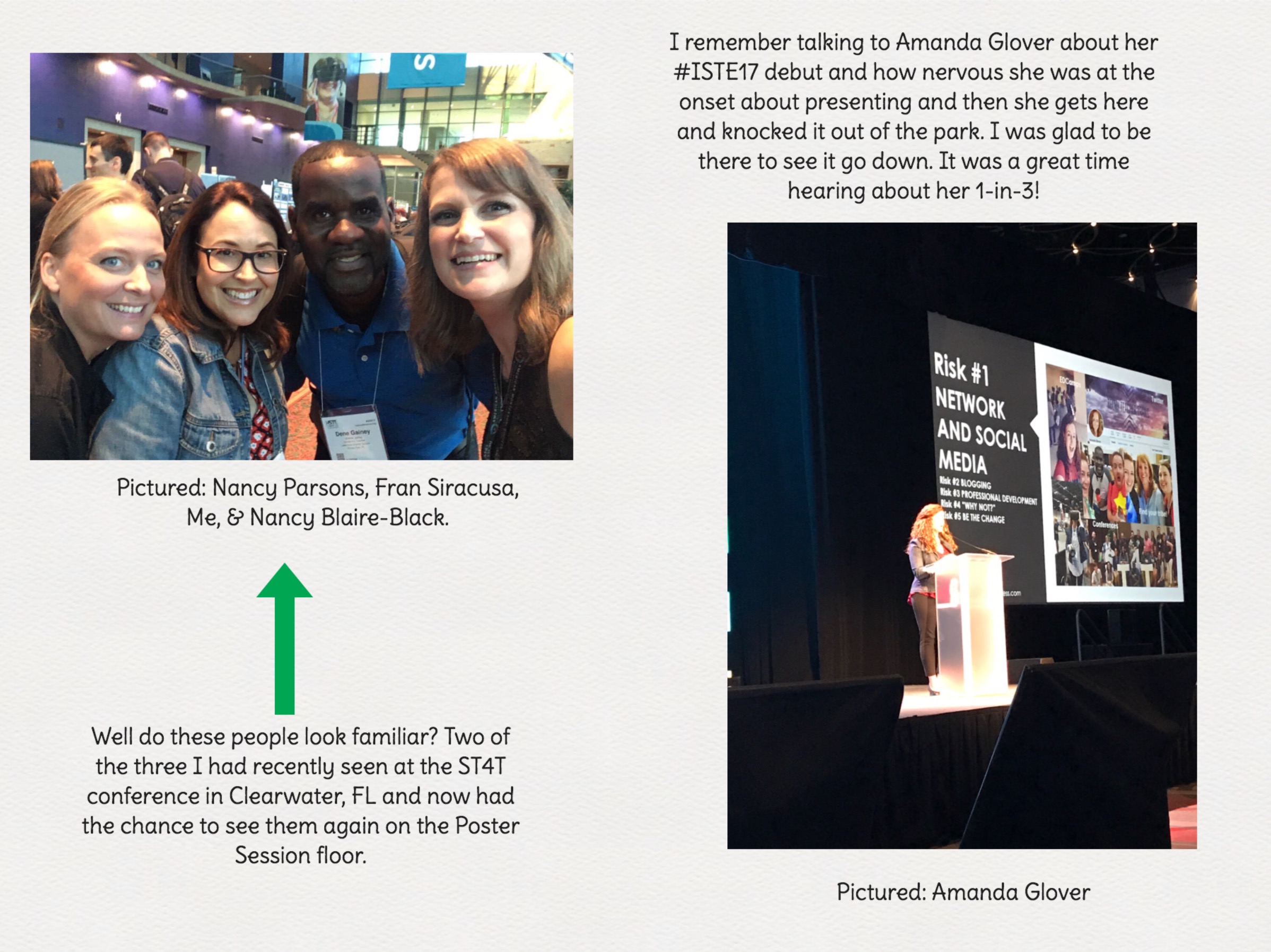

The Power of a Conversation
Eric Schlosser states:
"Different people, in good faith, can look at the same fact and interpret it differently. But that's where an interesting conversation begins."
I find it very interesting how with all the technology that has made communication amongst people more efficient, it at the same time may be the go-to for communication as opposed to the traditional face-to-face gatherings that still have the power to spark electricity, identify common ground and insight movements in the forward direction. Such a conversation was had on Saturday, March 18, 2017 as a fellow educator and I traversed the lengthy alligator-filled pathways of the Lake Woodruff Wildlife Refuge in Deleon Springs, FL.
While I did not think quickly enough to document the entire conversation, I was able to capture much of the meat that was both relevant and affirming. I will do my best to transcribe that here today.
Male teachers in education are a rare breed and what power there is when male educators particularly in elementary education take the reins and are all in, in terms of impacting a generation.
Listening to students is so important.
We talked about blended learning and multi-modal learning. We all have different interests and if we approached teaching and learning from that angle, it carries over to the way in which our attention is grabbed in school. Can you give me a way to learn that interests me? I will be engaged if it interests me. Not, let's do this the same way because it's always worked. While that may be the way that is assumed because enough of the students are responding or due to it benefiting the school in terms of standardized assessment or school grade, what about the rest of the students? What about the students who fall through the cracks?
In the long run, this may create students that attach no value or meaning to learning and ask "Is this what school and learning is all about?" these students may resort to other avenues due to where they were no provided opportunity to explore what interested them. This could lead to increased amounts of students dropping out or not finishing because they felt they had no reason to. "If this is how things are going to be done, then I am going to check out" may be the thought that runs through many students' heads.
What would happen if we flipped that script? What if we started to actually pay attention to learning styles and student interests and tie that into the curriculum? In no way are we excusing curriculum needs and grade level expectations, however we should work to integrate them. I do believe it is possible to accomplish and in most cases exceed expectations if we tied in blended learning, multi-modal learning so that students are receiving knowledge in a variety of ways, not just sitting in a classroom listening to traditional lecturing all the time. They need to do, they need to get up, they need to move. Maybe with options and variety we empower students to be risk takers because there is variety, and that variety includes learning in ways that are not common to them, but learning nonetheless.
It encourages them to be more risky in their learning. It is not a one shot, all or nothing kind of deal, which is unfortunately a lot of what ends up happening due to standardized assessments. We must be held accountable yes as educators and the easiest way to do that is through test scores. However, if they really want to see excitement and kids learning and taking risks, it has got to go beyond that (Kim Howell-Martin). Schools that are under-performing are potential for extensive growth. If we gave kids opportunities and tried new things, even beyond flexible seating, we would see great results. Imagine how interests can even be developed when students are able to see things in a different way than traditional learning? We need to break out of the mold.
It gives new meaning to a PLN and lifelong learning. It is hard to get stuck in a place if you constantly learn. I need to continue to develop because I don't want to ever get to a point where I cannot reach the kids in my classroom. Making that bold declaration would imply by motivation alone that we WILL impact (REACH) 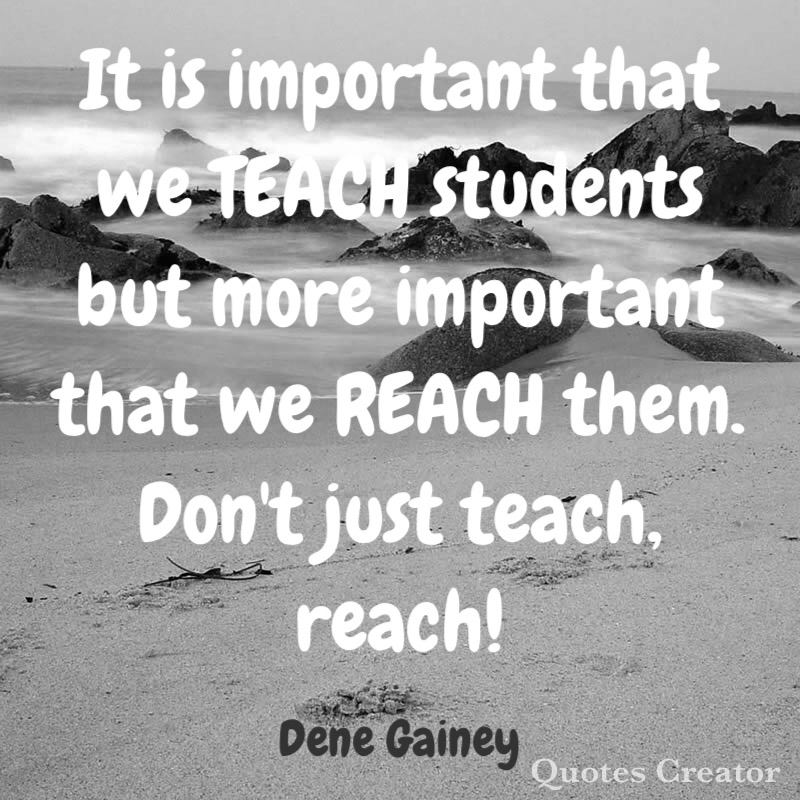 the students in our classrooms because we desire to. It is a constant transforming mindset. It cannot become stuck in a certain way when you are constantly molding your skill-sets and mindsets. In most schools (and if students stay), many teachers will teach each of the students. It needs to become a corporate effort to reach them. If educators approach their REACH differently, imagine how the students' mind sets, motives and drive to come to school in the first place would change.
the students in our classrooms because we desire to. It is a constant transforming mindset. It cannot become stuck in a certain way when you are constantly molding your skill-sets and mindsets. In most schools (and if students stay), many teachers will teach each of the students. It needs to become a corporate effort to reach them. If educators approach their REACH differently, imagine how the students' mind sets, motives and drive to come to school in the first place would change.
Kudos to the idea of when you can engage students in a variety of different ways, imagine how much more they will be motivated to come to your classroom and be independent learners and go beyond what you may set as the precedent in the classroom. They will want to go beyond that because you have empowered them with the tools. (Check out Chapter 9 of the Edumatch Snapshot in Education 2016 Published book) What can we do to stretch the kids to decide on what they want to do and then help them to open doors to opportunity?
"The only thing standing in the way of you and what you want to do is you."
What if our kids understood and embraced that thought? What if education at large actually validated that statement by not standing in the way? Motivation is huge. Do they believe they can? They need to SEE what is out there. They need exposure to things in order to develop and learn about what they may want. The whole real world aspect of things is a great way to expose kids. Applying meaning to learning essentially is looking at the real world. What is truly out there? Let's think organization for just a moment, why do we need it? Let the kids answer that question. This is a real-world expectation. We are learning the tool of organization today, why? Why would organization be important in LIFE? Can you think of situations where organization would make the difference between success or failure? Can you recall any personal experiences about how organization was helpful to you or your family? My point here is that connections to the real world are important and students begin to see how meaning is attached to things being taught due to their LIFE-connection. It goes far beyond my classroom. The light bulbs then come on, the habit is created, and then students have purpose for what they are doing.
I am challenging all of you that read this blog post to engage in conversations. You may never know the power inherent in something that is seemingly so simple if you don't start talking. Who knew that all of this would have come out of a simple walk in the wildlife refuge? Engage. Input. Listen. Learn. Spark. I can't wait to take this conversation piece further through student edcamps within the classroom where the students can also have conversations and they too can see the power! We've got the power!
“Good communication is as stimulating as black coffee and just as hard to sleep after.” ― Anne Morrow Lindbergh, Gift from the Sea
EdCamp Saint Augustine (#edcampstaug)
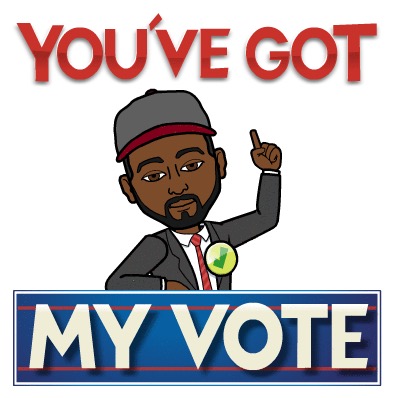 Ed Camps are simply the new thing (for me), or maybe just "the thing." Sure, there are still excellent conferences and forms of professional development, but Ed Camps I like to think of as by teachers for teachers, to the extent that learning something new is guaranteed. After all, You don't find many who are willing to give up 4-8 hours on a Saturday to learn, especially with no monetary compensation. Not only that, there is much to be said for those who travel some distance to get to the Ed Camp, not to mention all of the planning and behind-the-scenes work to make it run so seamlessly.
Ed Camps are simply the new thing (for me), or maybe just "the thing." Sure, there are still excellent conferences and forms of professional development, but Ed Camps I like to think of as by teachers for teachers, to the extent that learning something new is guaranteed. After all, You don't find many who are willing to give up 4-8 hours on a Saturday to learn, especially with no monetary compensation. Not only that, there is much to be said for those who travel some distance to get to the Ed Camp, not to mention all of the planning and behind-the-scenes work to make it run so seamlessly.
EdCamp St. Augustine was no deal breaker as many gathered to learn and grow with each other. In fact, students from Mr. Farnum's class joined us and gave us tours of the amazing (and pricey) Palencia Elementary School that truly is structured for student success, from the extensive "green elements" (earth-conscious) of the school, to the sheer space and opportunity for students to be immersed in their own learning. The students also participated in a session on Student Voice, where each spoke boldly about the important of giving them the opportunity to speak and how it has transformed their educational experience. The four topics below reflect the sessions I attended:
Session One: Virtual Field Trips
Katrina Worthington facilitated this session and we discussed the many benefits of FieldTripZoom, Skype and Mystery Skype. Further, the idea of inviting authors to Skype or go a hangout with you and your students can be both a powerful integration into the classroom as well as an opportunity for you to break down the walls and bring learning to them, especially if you can't physically take students to the source. I have already seen a great topic variety to supplement what we are doing in the classroom.
Session Two: Podcasting
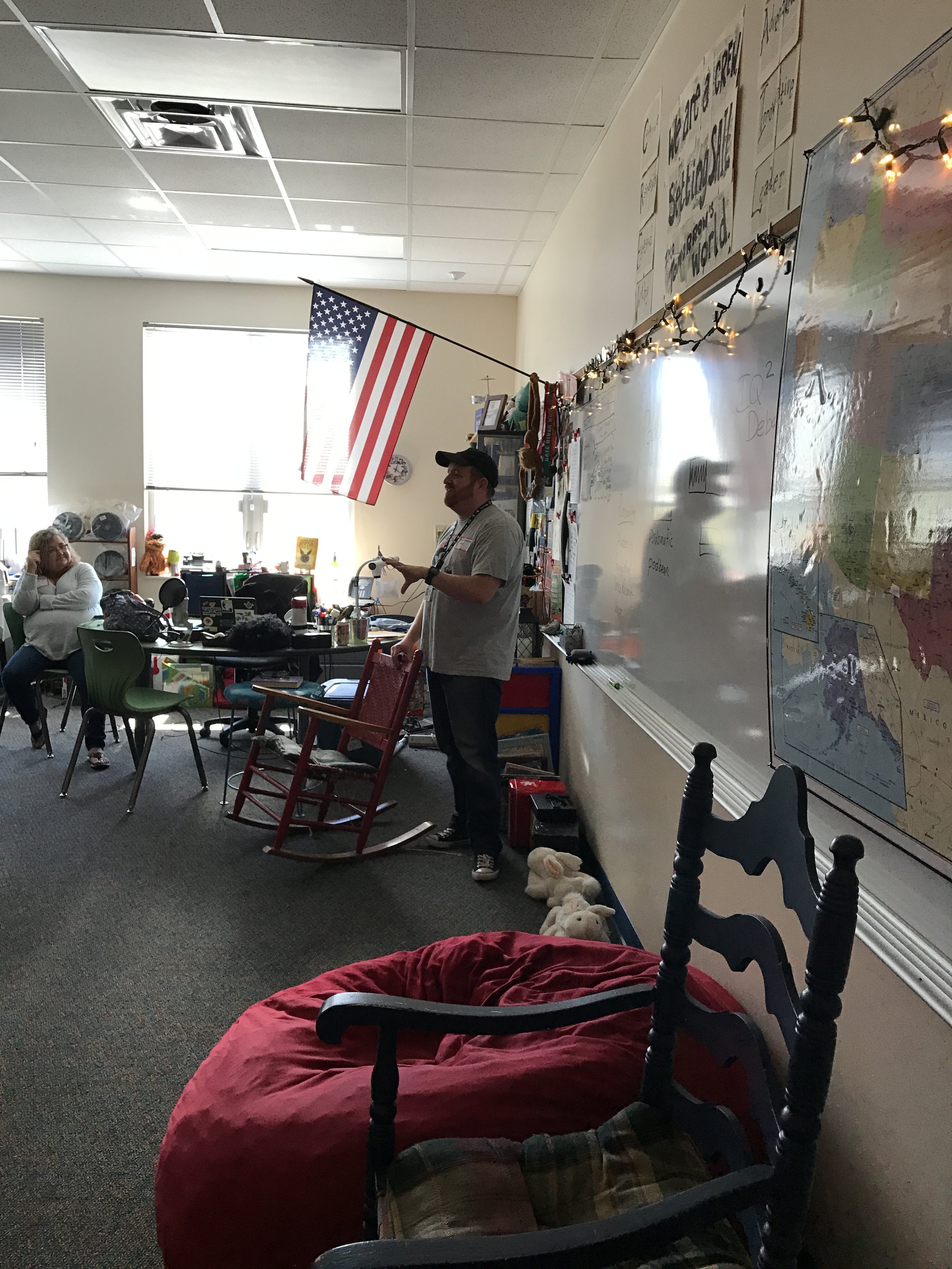
Magic Pants Jones (Sean Farnum) facilitated this session on podcasting, introducing the idea to educators as a way to empower students and give them the space to again, have a voice that can be shared beyond the four walls of the classroom. Sometimes the important messages are allowed to be delivered when educators give the students the opportunity to share that. Many ideas were bounced around the room, to include: One Word for 2017, inspirational podcasting, podcasting to state and local representatives, and conversation or interview-based podcasts. I did get the opportunity to briefly share my experience with students having worked with them to produce the second podcast of the year titled: "Black History Moments." I have conveniently linked it to my blog page for easy listening. There is a growing excitement surrounding getting students talking and creating in this way. Platforms like Garage Band, iPad Audio Apps and even Voxer can be used to grab the student recordings, and then audacity and/or garage band can be used for editing. Podomatic is a great way to publish the podcast, as well as Podbean and even Apple Itunes.
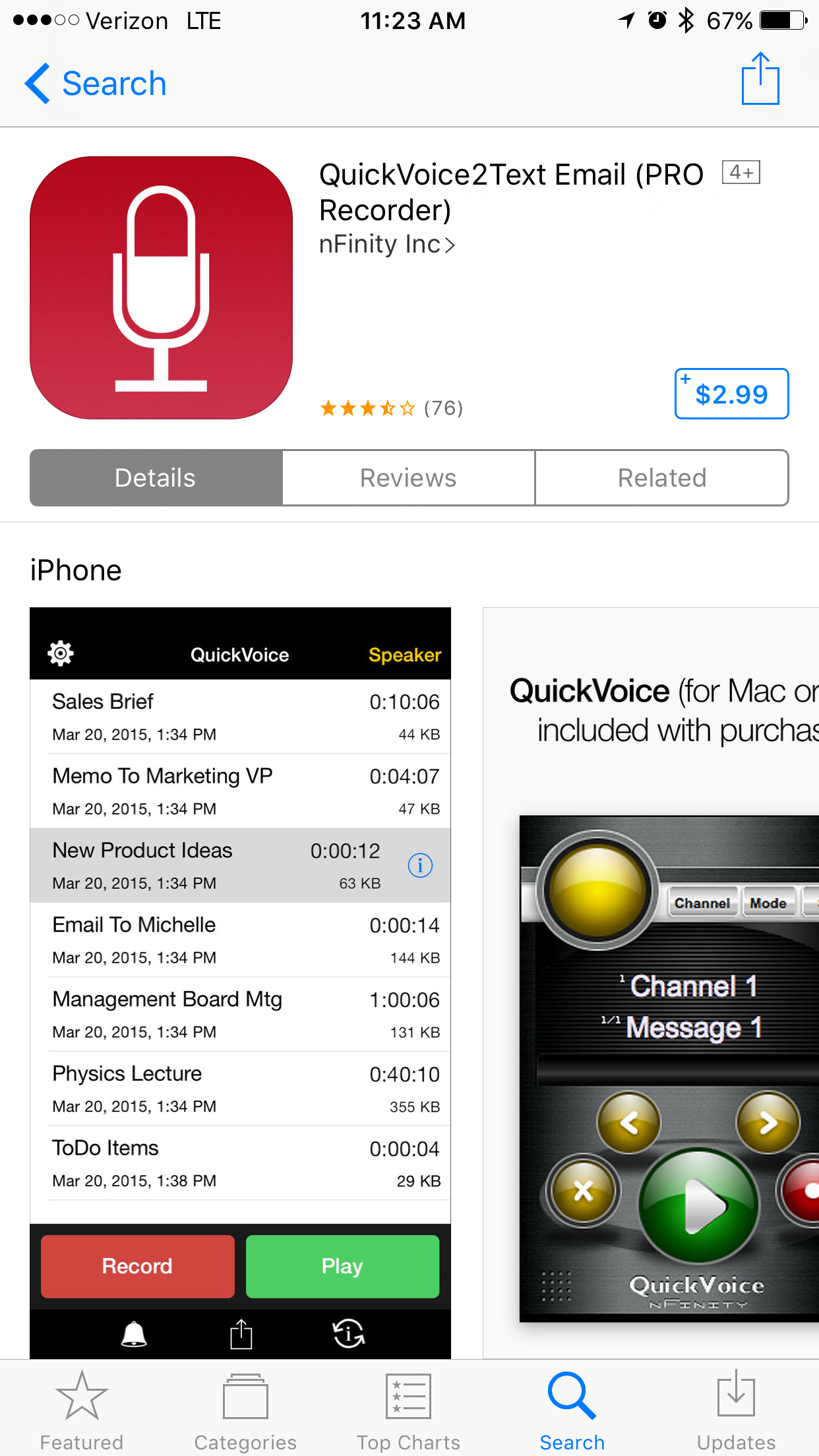
Session Three: Student Ed Camps
I have always wanted to try this out. What an incredible thought/idea, to approach teaching and learning in a new way. What if we allowed students the opportunity to have a voice and learn in a different way? One of the huge takeaways from this session was the fact that students are losing sight of social skills and technology (though useful and appropriate for learning and life, often becomes the tool used for babysitting students when adults are preoccupied or busy with life themselves. The true call of technology is to supplement life, not take over it. A group of educators present in the conversation derived the hashtag #staugssedcamp so that we can get the party started, share ideas about implementation over time, successes and tweaks. Jennifer Casey, Julie Haden, Kristin Westberry and Katrina Worthington were among the spark igniters in this session. We are all looking forward to engaging students in this way. Katrina spoke about the structure of the camps, and how topics were selected by the students, from Starbucks to Minecraft and even favorite drink items. She further commented on the level of student engagement therein and the oral reflections with students after the sessions were over. Joe Robison shared some valuable input as well regarding his experience with student edcamps.
[audio src="https://denegainey.files.wordpress.com/2017/03/dylan-campos-michael-jordan.m4a"][/audio]
Student Podcast Recording Above
Session Four: Play in Classrooms
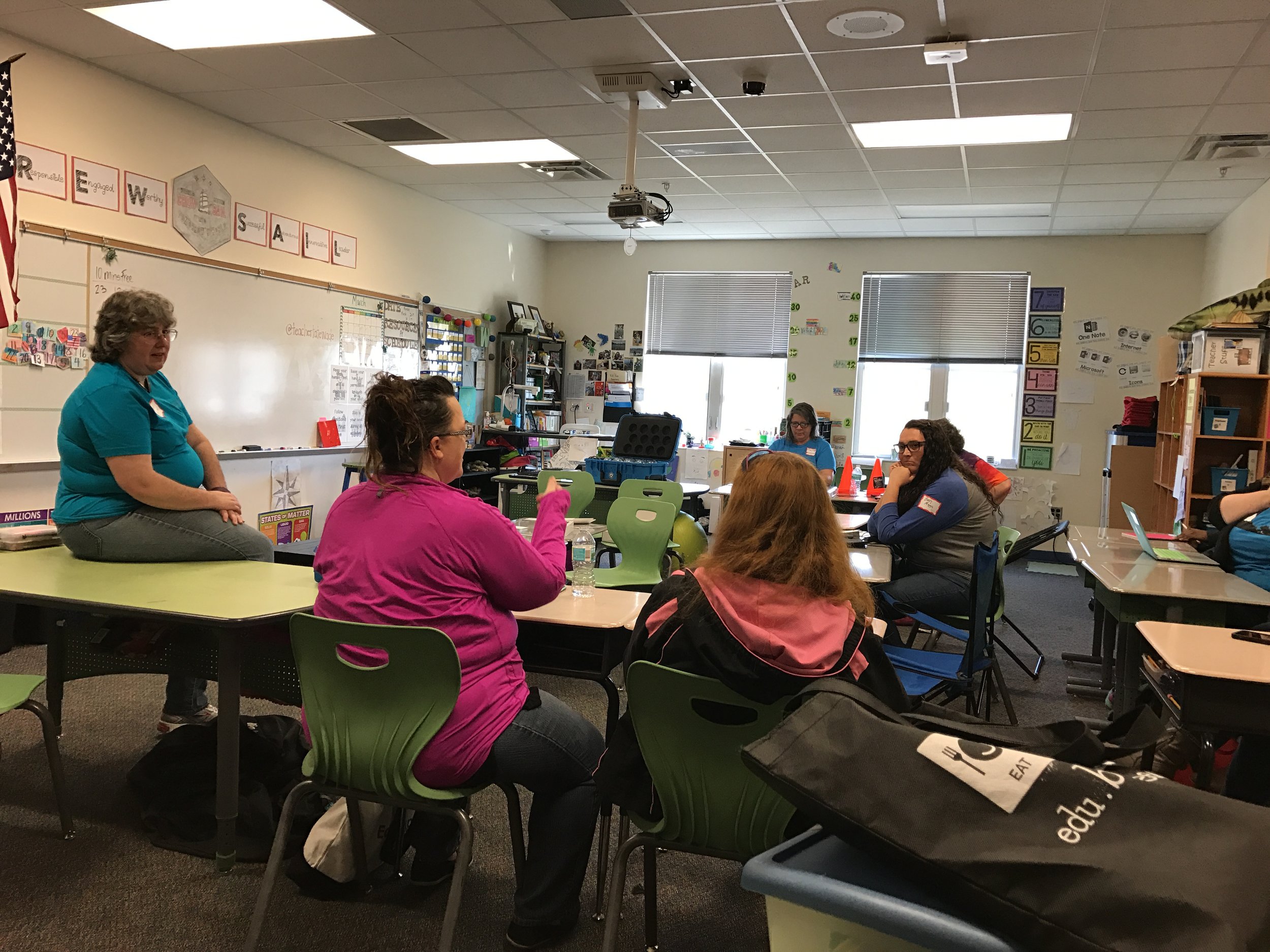
At EdCamp Orange, Sean Farnum facilitated a session on the importance of play in classrooms for students, and Tammy Neil continued that conversation at EdCamp St Augustine. (#edcampstaug) There are many ways that students can play in the classroom, but Tammy Neil stated students need to "play with a point." That makes sense, as there should be some structure so that even though it is play, it is a learning experience.
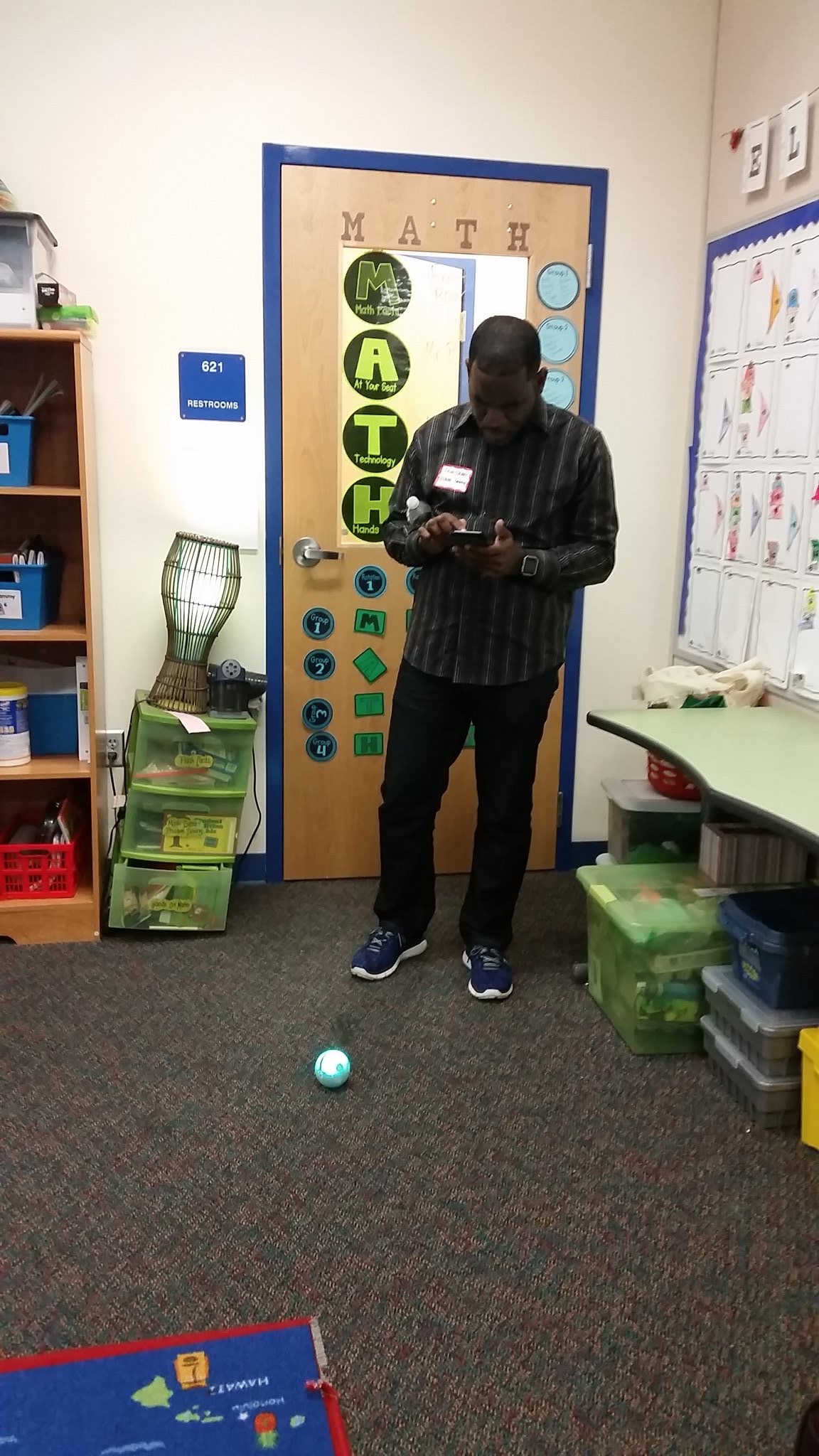
The term inquiry-based learning serves as a great umbrella for play in the classroom as it is research-based and by nature of the idea, there is no one "right way" to inquire. We all know the value of asking questions. And as I always say, without questions, we lack answers. From ideas like Go Noodle, maker spaces, spheros, and ozobots, to gamifying the classroom with Classcraft, students are learning while doing. There is no one way to play, but play is crucial.
I can't wait for the next ed camp, and it looks like that will be on March 25th, which is EdCamp Putnam in Palatka. It's all about the teaching, learning, sharing and growing. I am grateful to be surrounded by people who believe in being lifelong learners.
Reflections on FETC (Future of Education Technology Conference)
I have been so busy trying to implement the strategies and tools gained from attending this conference that I am very late on posting this blog. The Future of Education Technology depends on us learning, knowing, implementing, allowing, embracing, and integrating. There was so much information discussed during this conference, from the keynote speakers to the poster sessions and from the breakout sessions to the many conversations and opportunities for sharing with educators from around the state of Florida and beyond. Below is an example of an activity used within a Language Arts classroom that combines the arts with writing. Google Slides allows students to bring these areas together in seamless display.
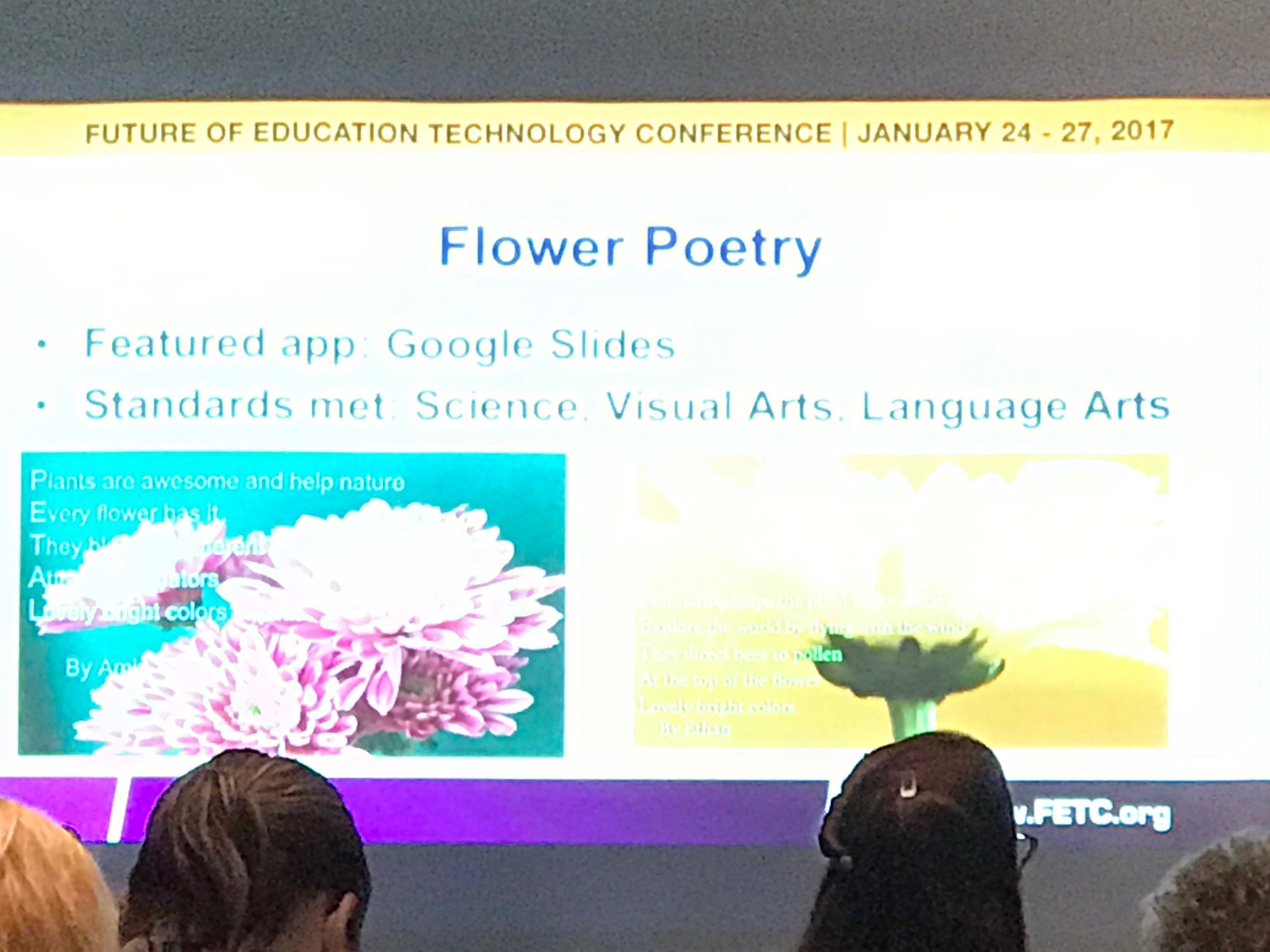
One of the greatest benefits and takeaways from the F.E.T.C. Conference was the understanding that technology can be integrated into any classroom and not only that, it should be integrated. The above visual identifies that way in which a school combined Science, Visual Arts and Language Arts into a cross-curricular experience. There are great benefits to connecting multiple areas of the curriculum so that students can understand these relationships, as well as learn in a variety of ways.

In this example, the presenters discussed a way to bring life to a biography. We certainly cover nonfiction reading as a part of ELA but why not make learning more engaging for students by integrating the technology component? In this example, students either created an image (using Sketchbook EDU), or found an image to to integrated into an app called Cha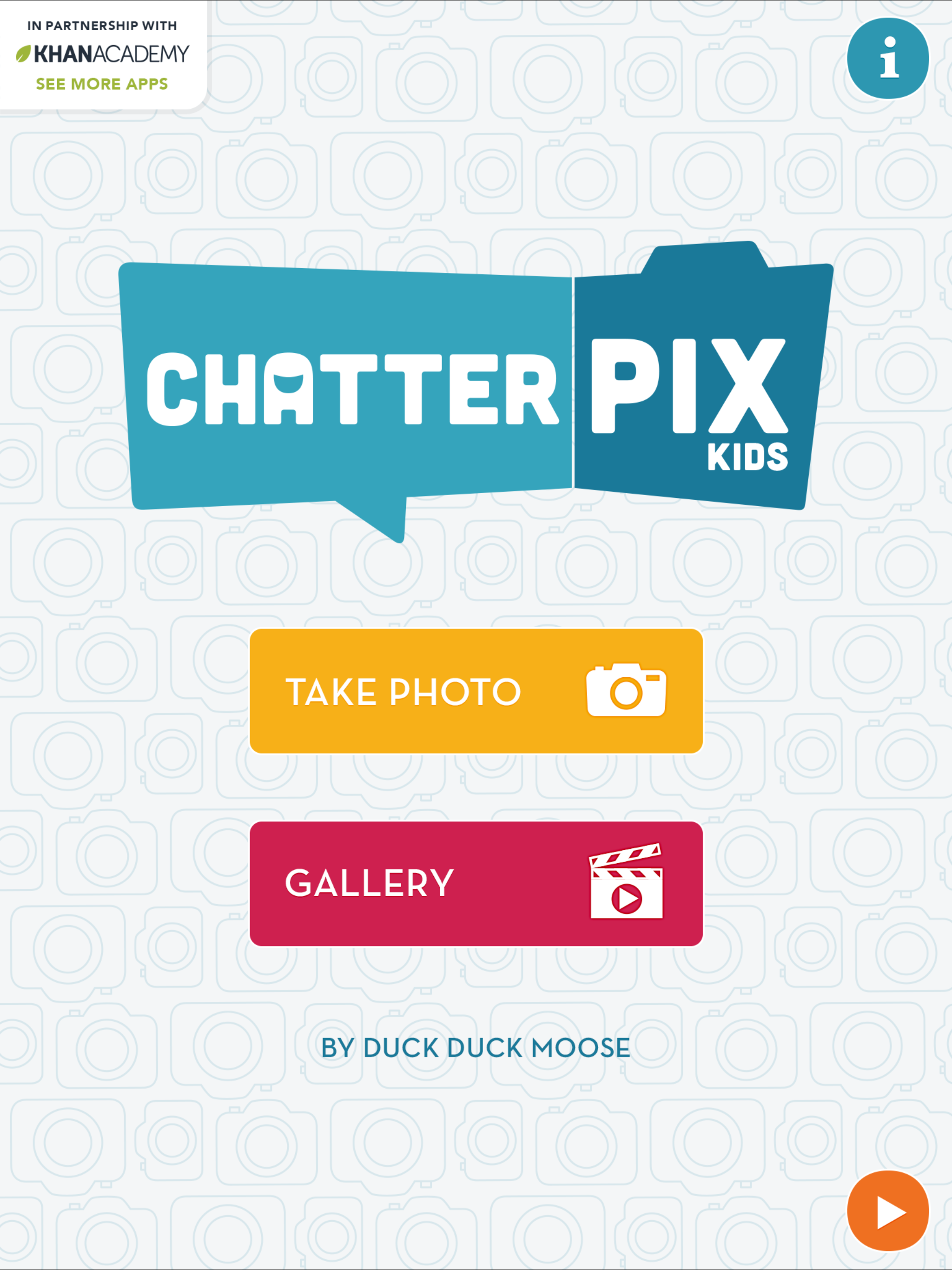 tterPix (screenshot pictured below).
tterPix (screenshot pictured below).
For example, if students were learning about Martin Luther King Jr, he or she might google search for a podium graphic, since it represents much of what Martin Luther King Jr. embodied in life. That graphic can be imported into ChatterPix and using coloring tools, colored over, to become a new image. See the video below, that was a bowl made from glass originally, transformed into Captain Granite.
[wpvideo XhOU0K7c]
EdTech Karaoke (below) was a fun time, as it brought out the singer and songwriter and artistic talents. It was so great to see so many educators who were not only concerned about their classrooms, but music and the arts as well.
The question "Why" should be asked when attempting to integrate technology into the classroom. We want the integration to have meaning for students and we can't just put an iPad in their hands and expect that they would not need guidance in its use. How can we make technology as meaningful as possible? (Consider why the technology is being used).
- Introduce a topic (Nearpod)
- Build understanding - (Google Earth)
- Apply learning (includes voice and choice) - iMovie, Buncee
Newsela allows students to read on an appropriate lexile level and if students require more scaffolding, they can navigate through and select a lexile level more appropriate for them. This is helpful for students as they learning the research process and there is a wealth of information at their fingertips.
What would any conference be like without interacting and engaging in excellent dialogue with other educators? Just as much as the sessions and the keynote speakers, these conversations allowed for rich learning experiences with lots to think about or consider.
 Below is a video that captures a few of the highlights from FETC with my voice in the background. I used this to present to teachers back at the school. It does not encompass everything but do enjoy. It's not about the technology, it is about what you do with it, the pedagogy. Yes! Let's not go backwards.
Below is a video that captures a few of the highlights from FETC with my voice in the background. I used this to present to teachers back at the school. It does not encompass everything but do enjoy. It's not about the technology, it is about what you do with it, the pedagogy. Yes! Let's not go backwards.
[wpvideo qnkBFI5f]
Michael Meechin shared that "The future of education is you." It can't be done without passionate educators who are excited to try new things, make mistakes, make everything a learning experience, both for the educator and the students and ultimately, keeping the students as the unique focus of every classroom.
#NotatISTE Karaoke
Well you might be wondering what this #notatiste karaoke party thing is all about? I too was in the same boat before I had a chance to learn about it and take part in it! I have always been musically inclined it seems, as I have been singing since I was a kid. It's just in me, what can I say! Since it was also my first time learning about ISTE, and all of the conversations that were surrounding the international conference in Denver, the #notatiste karaoke party on voxer was a great way to interact and share with those not able to go this year. Tracy Brady took the lead on organizing this safe zone for educators to express themselves through song, wrap, and lip syncing. The Karaokites that took part in the party this time included but was not limited to: Tracy Brady, Toutoule Ntoya bought the "Poison" to the house, Makisha Rogers, Dan Kreiness, Jacqueline Rose, Barbara Cotter, Cynthia Day chimed in with several snapchat renditions as part of our #notatiste karaoke party. Kate Zakrzewski. Of course I had to do a little Mariah Carey (Hero), because as educators we are heroes to some student somewhere, or maybe multiple students. I couldn't leave out John Legend because "All of Me" loves all of you. I also had to include a throw back "Lean on Me" to remind us all that when challenges arise, we have a PLN to lean on. This great group of people together make up a climate where we can free our minds through the power of music and learning. Karaoke was the draw but truly we learned from each other and continue to do so. Quick shout out to #edumatch and all of the great people that I have met through the group, that operates out of #Voxer. Side note, if you are not on voxer, you do need to create an account, because simply put, you meet phenomenal educators that become part of your professional learning network and essential your lifeline. You plug in and you get charged up! I am grateful to have had the chance to join the #notatiste karaoke party this month of July and I look forward to continued interaction with these phenomenal educators and more. Join us next time if you dare share that musical talent and partake in the great fun and learning!! Signing off.
But before I do, I must mention these educator #notatiste karaoke party blogs for your reading pleasure! :)
Happy Reading. We are a connected group of educators and we support each other. There is power in connection. It's electric!






